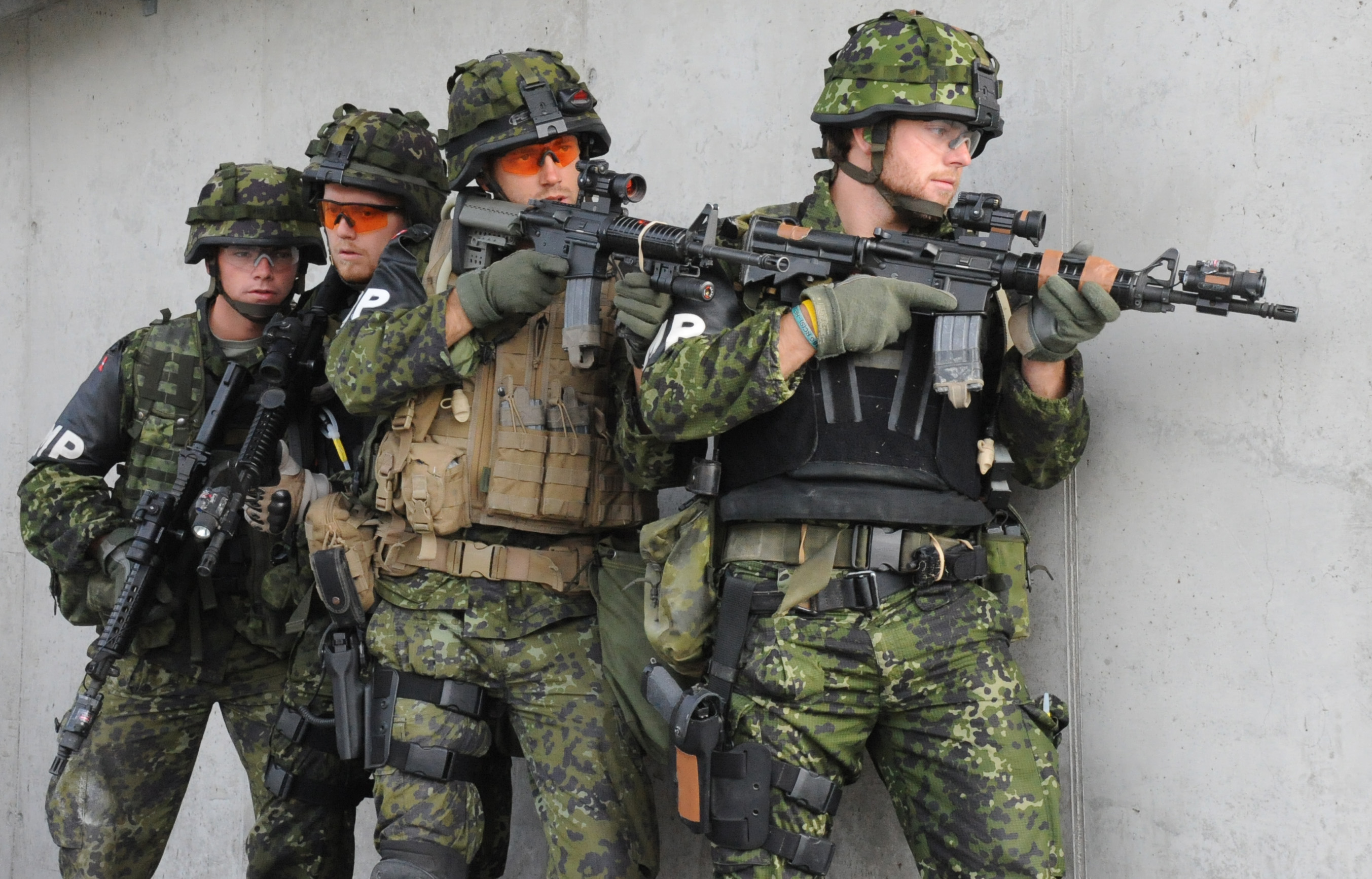Technical Choices Made Achieving Military Strategic Goals: When Protection Looks Threatening
Military deployments in the Western world have deeply changed since the fall of the Soviet Empire. When the point of armies was either to expand or to protect territories, just a few decades ago, they are now being used mainly for stabilization, in relatively local areas. Soldiers around the world are now being asked to appease tensions and contain explosive situations, usually by winning hearts and minds. How that can be done is the object of millions of brain-hours. Achieving acceptance and rallying support relies on what military actions are carried out of course, but also on some inconspicuous technical choices.
The American Army, as well as the British Royal Army, before invasion on D-day, was carefully coached as to French ways, and how to blend in with the local population. One of their instructions was to remove their helmets when speaking to locals, so as to seem less threatening, and also to learn a few words of French, at least, to make a small bond. Soldiers were to sit on top of the tanks, when going through towns in safe areas, and not inside, where all onlookers would see would be a scary pile of rolling steel. They were also given extra chocolate bars in their rations, to be distributed to children who, for some, had never tasted it.
Granted, the allied soldiers’ job was made easier by the fact that there was solid resentment of the Germans, within the French population. But it did establish, once again, that gaining local support did rely on many little details in military display.
In modern basic military training, soldiers are taught to carry their weapons in different positions, and what each position means. If appeasement is sought, weapons will be swung around the back, so that the soldiers will be seen from the front, without weapons visible. If on patrol, holding barrels towards the ground will be seen as less aggressive, or more “normal”, than barrels up towards the air, which seems more threatening. Yet, both positions equal to safety positions, but one seems more threatening than the other.
The technical choices made in terms of gear and vehicles, is also important. The high exposition of American troops to IEDs, during their tours in Iraq and Afghanistan, has led command to gradually decrease the number of Humvees and deploying the MRAPs in their place. Clearly, the latter, with its enormous hull-shaped floor, brings incomparable protection to troops during their movements and patrols, but it has come at a psychological cost. A Humvee may be a large vehicle, but it still basically looks like a car, something civilians can easily identify, because they have something similar parked in their own garage. An MRAP is a 20-ton, 10-foot high, steel monster and will scare just about anyone who looks at it, an unfortunate side-effect when one has been trying for years to gain people’s trust and acceptance.
Tracked vehicles also have a dangerous social and political veneer which must be taken into account. Their large automotive systems cause to ground to rumble, from miles away, which is good to intimidate enemies, but not to soothe people’s fears or antagonism. Given that civilian vehicles are almost exclusively wheeled (save a few construction vehicles), tracked vehicles mean war. In the minds of locals, they can only bring death and destruction, even when they are used for reconnaissance, crowd-control, or other non-lethal missions. In addition, the heavy damage they cause to roads, is perceived, rightly, as a hamper on economic reconstruction, a key element to pacification. The damage caused to the Lebanese roads by tanks is still visible today, after decades of tank traffic, and can be economically felt through delays in transport and damage to civilian vehicles driving in poor conditions.
Denmark is, for example, currently working on the replacement of its armoured personnel carrier, the Bradley M113. Although it will probably replace it with a different class of vehicle (Infantry Combat Vehicle – a more combat-ready vehicle), if it chooses a wheeled vehicle, such as the French VBCI or the Piranha 5, it will bear the appearance of a protection vehicle, more than if a tracked vehicle is chosen, such as a modernization of old M113, the Ascod or the CV 90. Today, Denmark is still engaged in NATO Peacekeeping operations, namely in the now relatively peaceful area of Kosovo. But commitments of Danish forces are not restricted to NATO or UN operations: Danish Defence Minister Nicolai Wammen was also recently thanked by US Secretary of Defence Chuck Hagel for “Denmark’s contribution to the fight against the Islamic State of Iraq and the Levant (ISIL) in Iraq”, without “Boots on the ground” in that case. However, they were more recently also engaged alongside the British in the Iraqi province of Basra, a highly unstable region, where convincing local populations to work with allied forces, and not turn on them as soon as night falls, was what allied command had been striving for, for years. Anything that lowers the appearance of threat or danger to locals will therefore come in handy.
American and Canadian soldiers who were deployed in Somalia, during UNOSOM 1 and UNOSOM 2, can testify how tricky rallying local support can be. Many experts agree that the deployment in the Horn of Africa was psychologically the most difficult of recent deployments. US and Canadian troops thought they would be welcomed as saviours who secured humanitarian supply routes, they were greeted with small arms, hostility and RPG fire. Local warlords saw the UN Intervention as a threat to their power, which it was, and used the fright inspired to locals by modern military equipment to antagonize Somalians against Americans and Canadians. The loud shimmy of chopper rotor blades above the terrified city of Mogadishu was a godsend to the warlords, in that regard.



